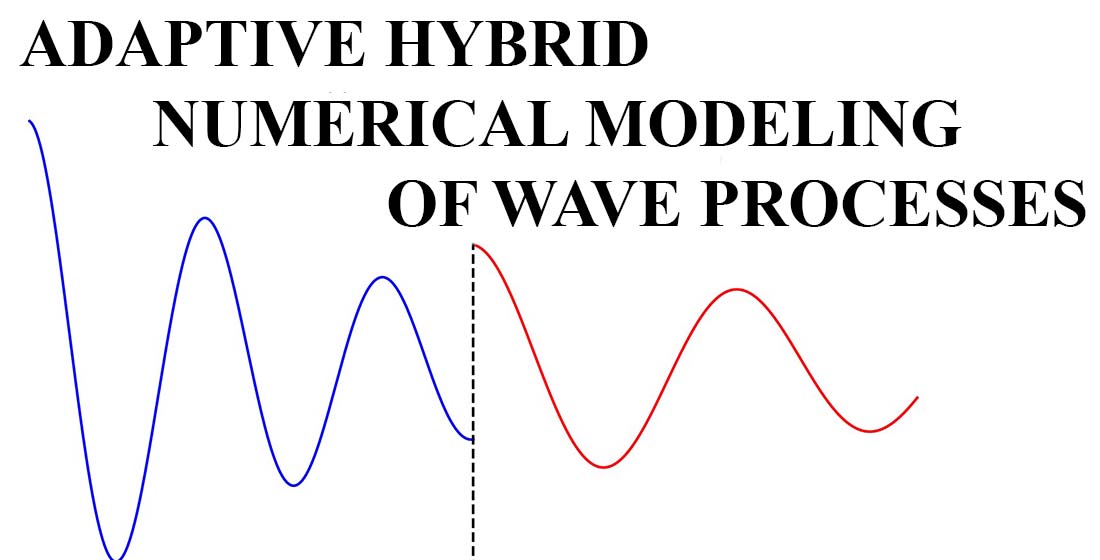Адаптивне гібридне чисельне моделювання хвильових процесів у багатошарових структурах на основі методів TMM та FEM
DOI:
https://doi.org/10.15587/2706-5448.2025.323919Ключові слова:
чисельне моделювання, багатошарові структури, хвильові процеси, адаптивні алгоритми, гібридний підхід, дискретизація сіткиАнотація
Об’єктом дослідження у даній роботі є хвильові процеси у багатошарових тонких плівках та методи їх чисельного моделювання за допомогою адаптивних гібридних моделей. Дослідження охоплює багатошарові середовища з градієнтним розподілом фізичних параметрів, включаючи неоднорідності.
Проблема, яка розглядається в цьому дослідженні, полягає в підвищенні точності та ефективності чисельного моделювання хвильових процесів у складних багатошарових структурах при одночасному зменшенні обчислювальних витрат. Традиційні методи, такі як метод матриць переносу або метод скінченних елементів, мають обмеження, пов'язані з обчислювальною складністю, чисельною стійкістю та можливістю врахування складних геометричних особливостей.
Суть отриманих результатів полягає в розробці та програмній реалізації адаптивної гібридної моделі, яка поєднує в собі метод матриць переносу для розрахунків поширення хвиль в однорідних областях та метод скінченних елементів для моделювання складної геометрії. Запропонований підхід оптимізує обчислювальні ресурси шляхом динамічного налаштування роздільної здатності сітки відповідно до локальних варіацій показника заломлення. Використання адаптивної дискретизації дозволило зменшити кількість розрахункових точок на 40 % без погіршення точності розрахунків. Відносна похибка результатів, отриманих за допомогою запропонованої моделі, не перевищує 1 %, що свідчить про її високу точність.
Досягнуті результати можна пояснити реалізацією ефективних адаптивних алгоритмів, які автоматично підлаштовують роздільну здатність сітки в залежності від градієнта фізичних параметрів, а також застосуванням узгоджених граничних умов між розрахунковими областями з використанням різних методів. Це забезпечує плавний перехід між різними зонами моделювання та мінімізує чисельні похибки на границях областей.
Практичні застосування отриманих результатів включають оптичні технології для проєктування та оптимізації фотонних пристроїв, сенсорів, антивідбивних покриттів та наноструктурованих матеріалів. Модель може бути використана для аналізу складних багатошарових систем у нанотехнологіях, біомедичних дослідженнях і проєктуванні мікрооптичних елементів. Вона є особливо корисною у сценаріях, де необхідно враховувати структурні неоднорідності, складну геометрію та граничні умови при мінімальних обчислювальних витратах.
Посилання
- Dhaouadi, A., Bousselmi, K., Monnet, S., Gammoudi, M. M., Hammoudi, S. (2022). A Multi-layer Modeling for the Generation of New Architectures for Big Data Warehousing. Advanced Information Networking and Applications, 204–218. https://doi.org/10.1007/978-3-030-99587-4_18
- Lebedev, O. V., Ozerin, A. N., Abaimov, S. G. (2021). Multiscale Numerical Modeling for Prediction of Piezoresistive Effect for Polymer Composites with a Highly Segregated Structure. Nanomaterials, 11 (1), 162. https://doi.org/10.3390/nano11010162
- Clingerman, M. L., King, J. A., Schulz, K. H., Meyers, J. D. (2001). Evaluation of electrical conductivity models for conductive polymer composites. Journal of Applied Polymer Science, 83 (6), 1341–1356. https://doi.org/10.1002/app.10014
- Agarwal, M., Pasupathy, P., Wu, X., Recchia, S. S., Pelegri, A. A. (2024). Multiscale Computational and Artificial Intelligence Models of Linear and Nonlinear Composites: A Review. Small Science, 4 (5). https://doi.org/10.1002/smsc.202300185
- Zhu, X. Y., Lee, J. H., Kim, K.-H., Lim, C.-H., Lee, S. H. (2024). Coupled CFD modeling and thermal analysis of multi-layered insulation structures in liquid hydrogen storage tanks for various vapor-cooled shields. Case Studies in Thermal Engineering, 63, 105317. https://doi.org/10.1016/j.csite.2024.105317
- Šeta, B., Sandberg, M., Brander, M., Mollah, Md. T., Pokkalla, D. K., Kumar, V., Spangenberg, J. (2024). Numerical modeling of fiber orientation in multi-layer, isothermal material-extrusion big area additive manufacturing. Additive Manufacturing, 92, 104396. https://doi.org/10.1016/j.addma.2024.104396
- Jaśkowiec, J., Stankiewicz, A., Pluciński, P. (2020). Three-dimensional numerical modelling of multi-layered shell structures using two-dimensional plane mesh. Advances in Engineering Software, 149, 102840. https://doi.org/10.1016/j.advengsoft.2020.102840
- Kasper, Y., Tuchin, A., Bokova, A., Bityutskaya, L. (2016). Numerical simulation of multi-layer graphene structures based on quantum-chemical model. Journal of Physics: Conference Series, 741, 012022. https://doi.org/10.1088/1742-6596/741/1/012022
- Yin, D., Xu, Z., Feng, J., Qin, Y. (2014). Numerical Modelling of Multilayered Coatings – Latest Developments and Applications. Manufacturing Review, 1, 8. https://doi.org/10.1051/mfreview/2014008
- Ying, P., Tian, X., Xia, Y. (2025). Plasticity analysis and a homogenized constitutive model of compressible multi-layer structure of battery. Composite Structures, 351, 118586. https://doi.org/10.1016/j.compstruct.2024.118586
- Zhao, L., Zhang, T., Gu, J., Wang, T., Xie, B., Gao, F. (2024). N-level complex helical structure modeling method. Scientific Reports, 14 (1). https://doi.org/10.1038/s41598-024-69246-1
- Chen, Jiayu., Yao, B., Lu, Q., Wang, X., Yu, P., Ge, H. (2024). A safety dynamic evaluation method for missile mission based on multi-layered safety control structure model. Reliability Engineering & System Safety, 241, 109678. https://doi.org/10.1016/j.ress.2023.109678
- Ferreira, M., Carvalho, V., Ribeiro, J., Lima, R. A., Teixeira, S., Pinho, D. (2024). Advances in Microfluidic Systems and Numerical Modeling in Biomedical Applications: A Review. Micromachines, 15 (7), 873. https://doi.org/10.3390/mi15070873
- Berger, S., Denner, M.-S., Roeglinger, M. (2018). The nature of digital technologies – Development of a multi-layer taxonomy. Research Papers, 92. Available at: https://aisel.aisnet.org/ecis2018_rp/92
- Repins, I., Contreras, M. A., Egaas, B., DeHart, C., Scharf, J., Perkins, C. L., To, B., Noufi, R. (2008). 19·9%‐efficient ZnO/CdS/CuInGaSe2 solar cell with 81·2% fill factor. Progress in Photovoltaics: Research and Applications, 16 (3), 235–239. Portico. https://doi.org/10.1002/pip.822
- Yeh, P. (1988). Optical Waves in Layered Media. Wiley.
- Yeh, P., Hendry, M. (1990). Optical Waves in Layered Media. Physics Today, 43 (1), 77–78. https://doi.org/10.1063/1.2810419
- Kotlyar, V. V. (2012). Planar Gradient Hyperbolic Secant Lens for Subwavelength Focusing and Superresolution Imaging. Optics, 1 (1). https://doi.org/10.11648/j.optics.20120101.11
- Taflove, A., Hagness, S. (2000). Computational electrodynamics: The finite-difference time-domain method. Artech House, Inc. Available at: https://www.researchgate.net/publication/202924434
- Shuaibov, O. K., Hrytsak, R. V., Minya, O. I., Malinina, A. A., Bilak, Yu. Yu., Gomoki, Z. T. (2022). Spectroscopic diagnostics of overstressed nanosecond discharge plasma between zinc electrodes in air and nitrogen. Journal of Physical Studies, 26 (2). https://doi.org/10.30970/jps.26.2501
- Shuaibov, A. K., Minya, A. I., Malinina, A. A., Gritsak, R. V., Malinin, A. N., Bilak, Yu. Yu., Vatrala, M. I. (2022). Characteristics and Plasma Parameters of the Overstressed Nanosecond Discharge in Air between an Aluminum Electrode and a Chalcopyrite Electrode (СuInSe2). Surface Engineering and Applied Electrochemistry, 58 (4), 369–385. https://doi.org/10.3103/s1068375522040123
- Bondar, I. I., Suran, V. V., Minya, O. Y., Shuaibov, O. K., Bilak, Yu. Yu., Shevera, I. V. et al. (2023). Synthesis of Surface Structures during Laser-Stimulated Evaporation of a Copper Sulfate Solution in Distilled Water. Ukrainian Journal of Physics, 68 (2), 138. https://doi.org/10.15407/ujpe68.2.138
- Shuaibov, O. K., Minya, O. Y., Hrytsak, R. V., Bilak, Yu. Yu., Malinina, A. O., Homoki, Z. T. et al. (2023). Gas Discharge Source of Synchronous Flows of UV Radiation and Silver Sulphide Microstructures. Physics and Chemistry of Solid State, 24 (3), 417–421. https://doi.org/10.15330/pcss.24.3.417-421
- Hrytsak, R., Shuaibov, O., Minya, O., Malinina, A., Shevera, I., Bilak, Y., Homoki, Z. (2024). Conditions for pulsed gas-discharge synthesis of thin tungsten oxide films from a plasma mixture of air with tungsten vapors. Physics and Chemistry of Solid State, 25 (4), 684–688. https://doi.org/10.15330/pcss.25.4.684-688

##submission.downloads##
Опубліковано
Як цитувати
Номер
Розділ
Ліцензія
Авторське право (c) 2025 Yurii Bilak, Fedir Saibert, Roman Buchuk, Mariana Rol

Ця робота ліцензується відповідно до Creative Commons Attribution 4.0 International License.
Закріплення та умови передачі авторських прав (ідентифікація авторства) здійснюється у Ліцензійному договорі. Зокрема, автори залишають за собою право на авторство свого рукопису та передають журналу право першої публікації цієї роботи на умовах ліцензії Creative Commons CC BY. При цьому вони мають право укладати самостійно додаткові угоди, що стосуються неексклюзивного поширення роботи у тому вигляді, в якому вона була опублікована цим журналом, але за умови збереження посилання на першу публікацію статті в цьому журналі.








